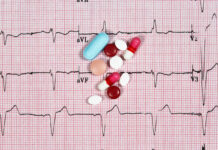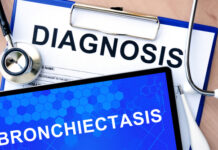A digital program that directly delivers lung cancer screening information to patients and allows them to request testing significantly increased the number of people who completed screening. The findings were presented at the CHEST Annual Meeting in Boston, Massachusetts.
“Screening high-risk current and former smokers with annual chest computed tomography (CT) scans lowers lung cancer mortality,” wrote the authors, led by David Miller. However, “despite years of public campaigns, lung cancer screening rates in the United States remain below 20%.”
The research group developed a program called mPATH-Lung, which identifies people eligible for lung cancer screening. The program educates those individuals about their eligibility and screening options and allows them to directly request screening tests. The researchers then conducted a randomized, controlled trial to determine whether the program affected screening completion rates.
The team queried the electronic health record at two academic health centers weekly to identify current and former smokers aged 50-76 years who did not have significant comorbidities and had an upcoming appointment with primary care. They then sent messages to those patients via the patient portal or text message, informing them about lung cancer screening and offering a hyperlink. The hyperlink led to a web-based program that collected medical and social history to determine individualized screening recommendations.
Patients eligible for screening were randomized to receive usual care or the mPATH-Lung intervention. Usual care consisted of a message that they qualified for screening and a video about exercise for lung health. The intervention consisted of:
- An animated educational video about lung cancer screening
- Individualized risk/benefit information
- A direct question about whether the person wanted screening, along with the option to request it directly
The study included 1,333 patients with a mean age of 60.7 years. The participants were 65% female and 79% non-Hispanic White. The majority (69%) had medium to high socioeconomic status and commercial (47%) or public (45%) insurance.
During the study period of April 2022 to May 2023, more patients in the mPATH-Lung cohort asked for lung cancer screening to be ordered (29.6% vs 18.8%; odds ratio [OR], 1.8; 95% CI, 1.4–2.3). Furthermore, more patients in the mPATH-Lung group completed a CT scan within 16 weeks (24.5% vs 17.0%; OR, 1.6; 95% CI, 1.2–2.1). The results were similar among subgroups based on race/ethnicity, age, sex, socioeconomic status, and insurance type.
“By offloading screening tasks from busy clinicians and giving patients access to digital self-service, digital health interventions could overcome many system-level barriers to lung cancer screening and increase screening rates,” the authors concluded.
Reference
Miller D, Brenner A, Dharod A,et al. A direct-to-patient digital health program increases lung cancer screening: a pragmatic randomized controlled trial of mPATH-Lung. Abstract #A3898-A3899. Presented at the CHEST Annual Meeting; October 6-9, 2024; Boston, Massachusetts.





